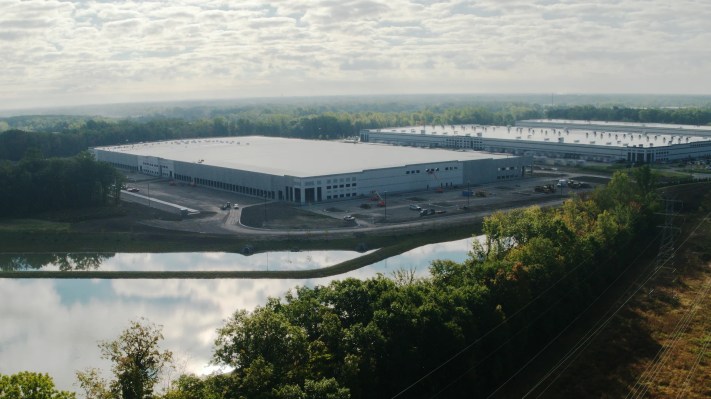The current battery boom might feel familiar to those who lived through the clean tech bubble that burst a decade ago, with an awful lot of money being invested in what are still nascent markets.
But certainly they’re bigger this time around: The number of electric vehicles on the road has more than doubled in the last seven years, for example, and demand doesn’t seem to be slowing. Market share for EVs has been growing even as the overall automotive market has softened in recent years.
It’s been enough to convince automakers and battery companies to commit nearly $300 billion to building a raft of gigafactories around the world, including more than $38 billion here in the U.S. alone. That confidence has cascaded through the market, driving waves of investment that have resulted in over $42 billion in venture and private equity capital committed to battery research, development, commercialization and manufacturing.
For battery startups like Michigan-based Our Next Energy, betting it all on the automotive market, which is notoriously fickle, can be a risky proposition. Demand for cars and trucks often craters when the economy tumbles. EV sales have been historically tied to an even more volatile indicator: gas prices. As COVID showed, just a few ripples in the automotive supply chain can send shockwaves through the market. The automotive market has a lot of volume, sure, but that doesn’t make up for the fact that margins are typically thin.
As investments go, the automotive sector doesn’t seem like a great place to make massive, long-term bets like the kind required for gigafactories.
And yet the money keeps flowing, and companies like ONE and its investors are increasingly confident that this round of climate tech investments will turn out very differently from the last. What’s behind that bravado?
Regulatory certainty is probably the biggest driver. A few weeks ago, the European Union banned the sale of fossil fuel vehicles starting in 2035. China has already done the same, and while the U.S. hasn’t taken action on a federal level yet, states including California, Massachusetts and North Carolina have similar laws on the books. Dozens of other countries have phaseouts planned by 2040.
With the bulk of the market scheduled to switch to EVs, there’s plenty of volume on the horizon, though it’s still a ways off. In the meantime, battery companies have an ace up their sleeve. They don’t have to wait until 2040 or even 2035 to find a stable market with long lead times and predictable demand. For that, they have the electrical grid.
Renewables are in the process of rewiring the grid, upending the usual patterns of supply and demand. For utilities, adapting to renewables’ intermittency has been challenging. They prefer power sources that are dispatchable, able to be called on at a moment’s notice to respond to surges in demand. Large fossil fuel plants were OK at this — they weren’t instantaneously available, but they could be spooled up in a matter of minutes to provide megawatts of electricity. Wind turbines and solar panels don’t respond in the same way. No sun, no wind, no go.
Batteries, though, are the ultimate dispatchable power source. They not only fill in gaps in supply, but because they can respond within milliseconds, they can stabilize the grid as a whole.
Because batteries can help “firm” intermittent renewables, allowing electricity to flow when the sun isn’t shining or the wind isn’t blowing, analysts are predicting a surge in demand for so-called grid-scale batteries, which in many cases are little more than EV packs strung together to store megawatts of power.
Unlike the automotive sector, utilities are relatively predictable customers — their capital budgets are planned years in advance, unlike most automotive purchases.
By 2030, the grid-scale storage market will grow fifteenfold, according to BNEF. In that time, 1,194 GWh of storage will be installed worldwide, mostly lithium-ion batteries. Installations in the U.S. will account for about a quarter of that.
If you consider North America an isolated market (which it isn’t, but for the sake of analysis, let’s pretend), then grid-scale storage amounts to 2% of total current and planned battery manufacturing capacity on the continent. That may not seem like much, but remember, much of that capacity is committed to automotive production through joint ventures.
That’s likely why ONE announced a new product last week tailored for that market. The massive new packs will use lithium-iron-phosphate cells from the 20 GWh factory the company announced in October, and they’ll be available in 2 MWh, 3 MWh and 6 MWh formats. The largest will be able to power about 600 homes for eight hours.
“The utility-scale grid market is now seeing for the first time the investments in renewable energy technologies competing with fossil fuel installations,” ONE CEO Mujeeb Ijaz told me earlier this month. “We see the birth of a very new vertical that’s deep in its capability to absorb a lot of energy storage.”
For independent producers like ONE, getting a toehold in the grid-scale storage market, and getting there early as demand ramps up, seems like a pretty sound bet.
